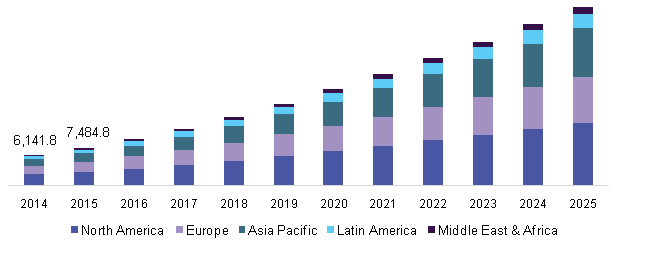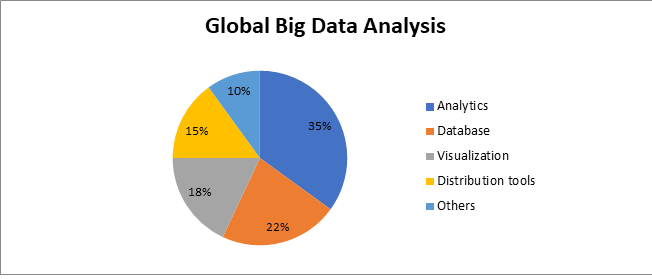Theme: Novel Technologies: Learning, Modelling and Interface with Data
Big Data 2022
Big Data, Machine Learning and Artificial Intelligence 2022
August 29-30, 2022 | London, United Kingdom
Conference Series LLC Ltd welcomes you to attend the Big Data, Machine Learning, and Artificial Intelligence Conference to be held in London, United Kingdom on August 29-30, 2022.
Details of Big Data 2022 Conferences in London, United Kingdom
|
Conference Name |
Place |
Date |
|
London, United Kingdom |
August 29-30, 2022 |
Big Data 2022 Conference
Conference Series is pleased to ask you to participate in the “2nd World summit on Big Data, Machine Learning and Artificial Intelligence 2022”. This conference bids an unparalleled opportunity to network with colleagues and learn from the distinguished leaders in Information Technology. It is an international platform that brings together the collection of investigators who are at the forefront in the field of Information Technology. The scientific program will include oral presentations of sub-disciplines, keynote sessions led by eminent scientists, and poster sessions presented interactively by junior scientists and graduate students. It is the last word forum for all the experts worldwide for brand spanking new interdisciplinary scientific collaborations and networking.
-
Who can attend?
- Directors of Big Data, Machine Learning, and Artificial Intelligence Research
- Computer Science Engineers
- Electrical Engineers
- Scientists
- Researchers
- Managers & Business Intelligence Experts
- Professionals in the media sector
- Research Scholars
- DataBase engineers
- Smart Innovators
- Industrial professionals
- Student Delegates
- Professors
-
Why attend?
- Keynote Sessions
- Workshop & Symposia
- Networking & B2B (Business to Business Meeting)
- B2C (Business to Customers)
- Q&A sessions with the keynote speakers
- Best research & Poster Award
-
Benefits:
- Global networking: In transferring and exchanging Ideas.
- Networking with experts in your field.
- Expert Forums.
- Career Development Sessions.
- Young Scientist awards.
- Best Poster Awards.
- Best Start-Up Awards.
- Preconference and Conference Workshops.
- Symposiums on
Track 1: Big Data Analytics
Huge information is information so vast that it doesn't fit in the fundamental memory of a solitary machine, and the need to prepare huge information by productive calculations emerges on Internet seeks, system activity checking, machine learning, experimental figuring, signal handling, and a few different territories. This course will cover numerically thorough models for growing such calculations and some provable confinements of calculations working in those models.
- Big data technology
- Gaining value from unstructured data
- Hadoop and Spark ecosystem
- Distributed and parallel computing
- Big data paradigm and V model
Track 2: Big Data in Bioinformatics, Multimedia, Smartphones
The volume of data is expanding fast in bioinformatics research. Big data sources are no longer limited to particle physics experiments or search-engine logs and indexes. Multimedia data makes up about 2/3rd of internet traffic, provides unprecedented opportunities for understanding and responding to real-world situations and challenges.
- Mobile communications and networks
- Heterogeneous data sources
- Cognition
- Mobile data analytics
- Computing efficiency
Track 3: Big Data Analytics in Healthcare and Medicine
Big data is in extended use in the field of medicine and healthcare. In healthcare, large amounts of heterogeneous medical data have become applicable in various healthcare organizations. The enormity and complexity of these datasets present great challenges in analyses and subsequent applications to a practical clinical environment. As technology raises the cost of healthcare is also increasing more and more. Big data is a great helping hand on this issue. It is a great help for even physicians to keep track of all the patients’ history.
- Data mining and processing in bioinformatics, genomics, and biometrics
- Bio-Surveillance
- Electronic Health Records
- Predictive Analytics
- Real-time Alerting
Track 4: Machine Learning and Statistical Methods for Data Mining
Machine learning is a part of data science that majorly focuses on writing algorithms in a way such that machines (Computers) are able to learn on their own and use the learnings to tell about new datasets whenever it comes in. Machine learning uses the power of statistics and learns from the training dataset. It is the interesting data-driven disciplines that help organizations make better decisions and positively affect the growth of any business. Statistics also deal with designing surveys and experiments to get quality data which can further be used to make an estimation of the population.
- Supervised learning
- Empowering decision-makers through data visualization
- Algorithms for data analysis in Statistics
- Designing surveys and experiments
Track 5: Artificial Intelligence
Artificial Intelligence is a computer-controlled robot or software to thinks intelligently and focuses on understanding core human abilities such as vision, speech, language, decision making, and other complex tasks, and designing machines and software to emulate these processes.
- Scientific computing
- Computer graphics
- Algorithmic trading
- Cybernetics
- Artificial Neural networks
- Adaptive Systems
- Ontologies and Knowledge sharing
Track 6: Networking Big Data Security
High-performance network capacity provides the backbone for high-end computing systems. These high-end computing systems play a vital role in Big Data. With the evolution of networks, threats or attacks with the intention of disrupting service or stealing confidential data are increasing tremendously. Networks have to be monitored constantly and protected against attacks.
- Mining with data clouds
- Hive database in Hadoop Distributed File System
- Database management system
- IP networks
Track 7: Mobility Analytics from Spatial and Social Data
Recent developments in both social networks and spatial services have advanced significantly thanks to the prevalence of online social platforms, smart devices, and geo-positioning components. However, social and spatial processes interact dramatically. For instance, joint actions happen within space and social factors such as population migration or even just interacting with friends on a geo-enabled smartphone.
- Open Data
- Primary surveyed data
- Multimodal mobility
- Information retrieval and smart search
- OLAP technologies
Track 8: Data Mining Meets Visual Analytics at Big Data Era
The Visual analytics technique enjoys the joint advantage of human intelligence and the machine’s computational power. Various aspects of the data mining method need to be inspected, justified, organized, and evaluated for a successful VA system. The challenges include but are not limited to big data reduction method to enable large-scale visualization big data integration algorithms to fuse heterogeneous information sources for efficient visualizations temporal data analysis techniques for the effective dynamic and streaming data visualization and the mechanism for data privacy and security to deliver trustworthy big data visualization for end users.
- Knowledge discovery with data mining and visual analytics technologies
- Novel methods on visualization-oriented data mining
- Visual representations and interaction techniques of data mining results
Track 9: Unlocking the Potential of Smart Data
The amount of data being created today is expected to increase ten-fold in less than a decade, it’s also anticipated that enterprises will produce around 60% of global data by 2025. However, while the amount of data may be growing exponentially, the intelligence gleaned from it is not.
- How to use big data to support a smarter city?
- Impact of Big Data Analytics
- Revolutionizing Business Models
- Big data and data science using intelligent approaches
Track 10: Challenges and opportunities of predictive analytics
Big Data is described by high dimensionality and large sample size. These two features raise three unique challenges: (i) high dimensionality brings noise accumulation, spurious correlations and incidental homogeneity; (ii) high dimensionality combined with large sample size creates issues such as heavy computational cost and algorithmic instability; (iii) the massive samples in Big Data are typically aggregated from multiple sources at different time points using different technologies.
- Need for synchronization across data sources
- Uncertainty of Data Management Landscape
- Big Data Talent Gap
- Getting important insights using Big data analytics
Relevant Conferences: Big Data Conferences | Data Management Meetings | Data Mining Congress | Cloud Computing Conference | Machine Learning Events | Data Science Congress |
- Computer Science, Machine Learning and Big Data Analytics, August 30-31, 2018 Dubai, UAE
- 5th Annual Smart Data Summit 17-18 APRIL 2018, DUBAI - UAE
- Big Data Show on 01-03 May 2018, Dubai World Trade Centre, Dubai, UAE
- 4th International Conference on Data Mining and Applications, Feb 24, 2018 - Feb 25, 2018, Dubai, UAE
- Artificial Intelligence, April 16-17, 2018 Las Vegas, Nevada, USA
- Big Data Innovation, Data Mining and Analytics Summit, August 20-21, 2018, Singapore
- Big Data Analytics & Data Mining, September 26-27, 2018 Chicago, Illinois, USA
- 20th International Conference on Data Mining, Big Data, Database and Data Technologies, November 26 - 27, 2018
- Big Data Analysis and Data Mining, 20-21 June 2018 Rome, Italy
- Big Data & Analytics Innovation Summit, March 15–16 Melbourne, 2018
- Big Data Analysis and Data Mining, September 07-08, 2017 Paris, France
- Big Data & Analytics Innovation Summit, 7–8 Singapore, 2018
- Big Data Innovation Summit, July 17–18 Las Vegas, 2018
- Big Data Innovation Summit, March 21–22 London, 2018
- Big Data & Analytics Innovation Summit, April 18–19 Hong Kong, 2018
- Big Data Innovation Summit, April 12–13 San Francisco, 2018
- Big Data & Analytics Innovation Summit, September 5–6 Shanghai, 2018
- Computer Science & Engineering, June 21-22, 2018 Oslo, Norway
- Global Artificial Intelligence Conference, January 17 to 19 2018, Santa Clara, USA.
- Marketing Analytics and Data Science, April 11 - 13, 2018 San Francisco, CA
Related Societies/Associations:
Advanced Analytics Institute, University of Technology, Sydney, National Center for Data Mining (NCDM) at the University of Illinois at Chicago, Germany, American Association of Engineering Societies, American Society for Engineering Education, National Society of Professional Engineers, Institution of Engineers, Bangladesh, Bangladesh Computer Society, Chinese Society for Electrical Engineering, Computer Society of India, Society of EMC Engineers (India), Japanese Union of Scientists and Engineers, Saudi Council of Engineers, European Federation of National Engineering Associations, Society of Professional Engineers UK, New Zealand Computer Society, Society of Professional Engineers UK, Germany, Big Data Europe Empowering Communities with Data Technologies, Europe, National Centre for Data Mining, Chicago, Web Analytics Association, Florida, SIAM society for industrial and applied mathematics, United States, IAENG Society of Data Mining, Hong Kong, IEEE Computer Society, United States, Data Mining Section of INFORMS, United States, International Institute for Analytics, Oregon, The International Machine Learning Society, Germany, International Institute for Business Analysis, Ontario, European Knowledge Discovery Network of Excellence, Germany
The global big data market size was valued at USD 25.67 billion in 2015 and it is expected to significant growth over the forecast period. The elevating number of virtual online offices coupled with the increasing popularity of social media producing an enormous amount of data is a major factor driving growth. Increased internet penetration owing to several advantages including unlimited communication, abundant information and resources, easy sharing, and online services generates huge chunks of data in everyday life, which is also anticipated to propel demand over the coming years.

The market is rapidly becoming a developing area of focus across numerous end-use industries. The technology adds up substantial value by providing useful information; enabling organizations to manage large chunks of data efficiently. Companies with the help of these solutions obtain both efficiency and quality in managing large volumes of raw information, ultimately resulting in significant cost reduction.
2017 Market Research Report on Cloud Computing Services Industry was a professional and depth research report on Cloud Computing Services industry that you would know the world's major regional market conditions of Cloud Computing Services industry, the main region including North America, Europe, and Asia, etc., and the main country including United States, Germany, Japan, and China, etc.
In recent decades, the development of information and communications technologies injects new vitality for enterprise marketing. For example, barcode technology and the emergence of online stores greatly enhance the efficiency of the enterprise because of which company managers are beginning to face the enormous data. However, the data and business profits are not directly proportional. Unfortunately, the human brain can’t handle so much data. In the meanwhile, data mining technology becomes very mature in theory. The technology-oriented applications for enterprise decision-makers with a new perspective to look at the market. Those advanced technologies let enterprises obtain a lot of resources from different channels and use those effective tools to translate data into unlimited opportunities.
The industry has experienced exponential growth in the amount of both unstructured and structured data across several sectors. Gathering, storing, and exploiting have become vital tasks for companies. Need for tools to manage this substantial data amount is expected to fuel the market demand over the forecast period. Organizations collect and store data with a large view to extract information from data to gain better insights. This is done for analyzing and making precise decisions, which help in improving operational efficiencies, risk mitigation, and cost reduction.
The Artificial Industry is separated by core technologies into Natural Language Processing(NLP), Machine Learning, Deep Learning, and Machine Vision archetype. The Deep Learning technology segment is anticipated to dominate the AI market; both in terms of revenue and CAGR over the forecast period of 2017 to 2025. ‘Deep Learning’ technology is gaining prominence because of its complex data-driven applications including voice and image recognition. It offers a huge investment opportunity as it can be leveraged over other technologies to overcome the challenges of high data volumes, high computing power, and improvement in data storage.
Rapid improvements in fast information storage capacity, high computing power, and parallelization have contributed to the swift uptake of robotics and artificial intelligence technology in end-use industries such as automotive and healthcare. Further, the need for understanding and analyzing visual content, for gaining meaningful insights, is expected to provide traction to the industry over the forecast period.
Artificial Intelligence - Direct & Enabled Revenue, 2014 - 2025 (USD Million)

Scope and importance
Big data is broadly influencing the IT industry, with few technologies or trends. If analyzed effectively, massive information is helping the companies to improve in their decision-making and compete on another level. However, managing big data is a difficult endeavor, according to a recent report by Microsoft.
"Big data absolutely has the potential to change the way governments, organizations, and academic institutions conduct business and make discoveries, and it's likely to change how everyone lives their day-to-day lives.
Artificial Intelligence and Machine Learning Market growth
Markets forecast the Artificial intelligence market to be valued at USD 21.46 billion in 2018 and is likely to reach USD 190.61 billion by 2025, at a CAGR of 36.62% during the forecast period. Major drivers for the AI market are growing big data, the increasing adoption of cloud-based applications and services, and an increase in demand for intelligent virtual assistants.
The AI market for hardware is expected to grow at a high CAGR during the forecast period. This can be attributed to the increasing need for hardware platforms with high computing power to run various AI software. The presence of major companies that contribute to the AI sector in North America has made the region a major market for hardware related to AI.
By technology, the artificial intelligence market for computer vision holds the largest share of the market.
Machine learning’s ability to collect and handle big data, and its applications in real-time speech translation, autonomous robots, and facial analysis are fuelling its growth. The growing adoption of computer vision in autonomous or semiautonomous applications in various industries, such as manufacturing and automotive, is propelling the growth of this technology in the AI market.
Artificial Intelligence Market Report Scope
|
Report Attribute |
Details |
|
Market size value in 2021 |
USD 95.5 billion |
|
Revenue forecast in 2028 |
USD 1180.4 billion |
|
Growth Rate |
CAGR of 43.22% from 2021 to 2028 |
|
Base year for estimation |
2020 |
|
Historical data |
2017 - 2019 |
|
Forecast period |
2021 - 2028 |
|
Quantitative units |
Revenue in USD billion and CAGR from 2021 to 2028 |
|
Report coverage |
Revenue forecast, company ranking, competitive landscape, growth factors, and trends |
|
Segments covered |
Solution, technology, end-use, region |
|
Regional scope |
North America; Europe; Asia Pacific; South America; MEA |
|
Country scope |
U.S.; Canada; Mexico; Germany; U.K.; China; Japan; India; Brazil |
|
Key companies profiled |
Advanced Micro Devices; AiCure; Arm Limited; Atomwise, Inc.; Ayasdi AI LLC; Baidu, Inc.; Clarifai, Inc; Cyrcadia Health; Enlitic, Inc.; Google LLC; H2O.ai.; HyperVerge, Inc.; International Business Machines Corporation; IBM Watson Health; Intel Corporation; Iris.ai AS.; Lifegraph; Microsoft; NVIDIA Corporation; Sensely, Inc.; Zebra Medical Vision, Inc. |
Submissions in the form of extended abstracts, short papers, and full manuscripts are welcome.
The Conference Proceedings will be published in an international journal.
The Conference Proceedings will be indexed by Google Scholar.
Each paper will be assigned a unique DOI number by Crossref.
Paper Topics
Big Data 2022 is now accepting papers on the following topics through its OpenConf system. If you have a paper on an additional topic, please write an email to bigdatasummit@eventcontact.org The current topics include but are not limited to:
- Big Data Analytics
- Big Data Analytics in Healthcare and Medicine
- Big Data in Bioinformatics, Multimedia, Smartphones
- Machine Learning and Statistical Methods for Data Mining
- Artificial Intelligence
- Networking Big Data Security
- Mobility Analytics from Spatial and Social Data
- Data Mining Meets Visual Analytics at Big Data Era
- Unlocking the Potential of Smart Data
- Challenges and opportunities of predictive analytics
- Applied statistics
- Big data
- Bioinformatics
- Computational statistics
- Data science
- Data integration
- Data mining
- Medical statistics
- Time-series Analysis
- Web data collection
Manuscripts are invited for the 2nd World summit on Big Data, Machine Learning, and Artificial Intelligence 2022: Theory and Applications on topics lying within the scope of the conference. All contributions must be original and should not have been published elsewhere.
Three types of manuscripts could be published in the conference proceedings:
- Extended Abstracts
- Short Papers
- Full Papers
You may choose to submit any of the above based on the weight of the contributions in your manuscript.
- Extended abstracts are welcome for publication. These submissions should be around 500 words and must give a clear indication of the objectives, scope, and results (if available) of the research. No figures or tables are allowed.
- Short papers must give a clear indication of the objectives, scope, and results of the paper, and must (at least) contain an abstract, an introduction, a results/discussion section, and a reference section. Short papers are limited to 3 pages.
- Full Papers are limited to 10 pages and are more descriptive of the work that has been done. Also, more sections, images, graphs, and results could be presented.
Oral Presentations: 30-45 minutes of a recorded video presentation (mp4) or PowerPoint slides with recorded voice (ppt/pptx)
Poster Presentations: There are two options.
First, authors can prepare a recorded short video presentation which can be either 8-10 minutes of a recorded video (mp4) or PowerPoint slides with recorded voice (ppt/pptx).
Second option is to prepare a virtual poster (jpeg/pdf) which includes the following: brief abstract, background, problem statements, results, and discussions. In this case, recorded voice is not necessary.
All Oral/Poster Presentations will be done through a video or PowerPoint prepared by authors.
Conference Highlights
- Big Data Analytics
- Big Data in Bioinformatics, Multimedia, Smartphones
- Big Data Analytics in Healthcare and Medicine
- Machine Learning and Statistical Methods for Data Mining
- Artificial Intelligence
- Networking Big Data Security
- Mobility Analytics from Spatial and Social Data
- Data Mining Meets Visual Analytics at Big Data Era
- Unlocking the Potential of Smart Data
- Challenges and opportunities of predictive analytics
To share your views and research, please click here to register for the Conference.
To Collaborate Scientific Professionals around the World
| Conference Date | August 29-30, 2022 | ||
| Sponsors & Exhibitors |
|
||
| Speaker Opportunity Closed | Day 1 | Day 2 | |
| Poster Opportunity Closed | Click Here to View | ||
Useful Links
Special Issues
All accepted abstracts will be published in respective Our International Journals.
- Journal of Information Technology & Software Engineering
- International Journal of Innovative Research in Computer and Communication Engineering
- Journal of Computer Science & Systems Biology
Abstracts will be provided with Digital Object Identifier by








































